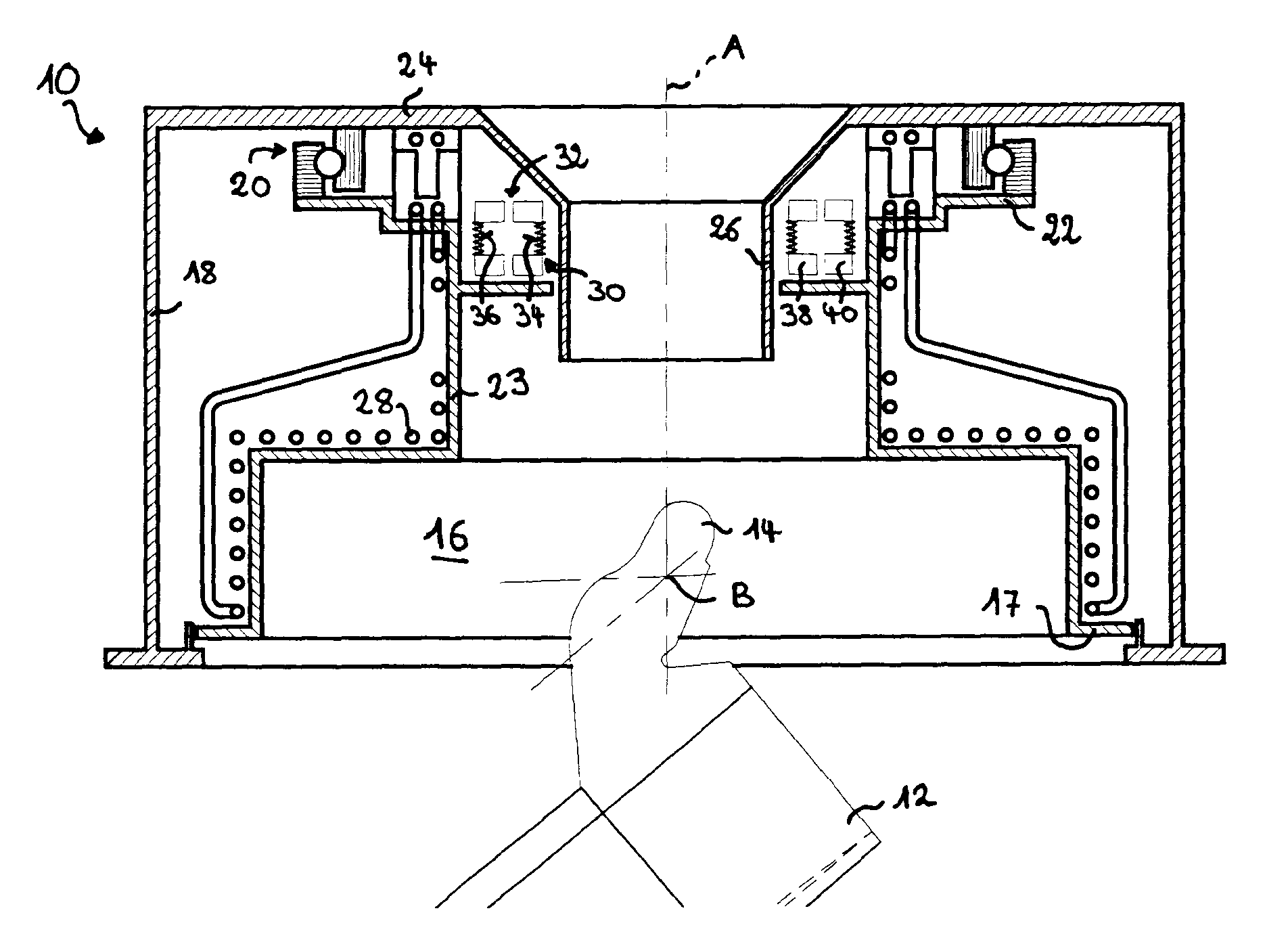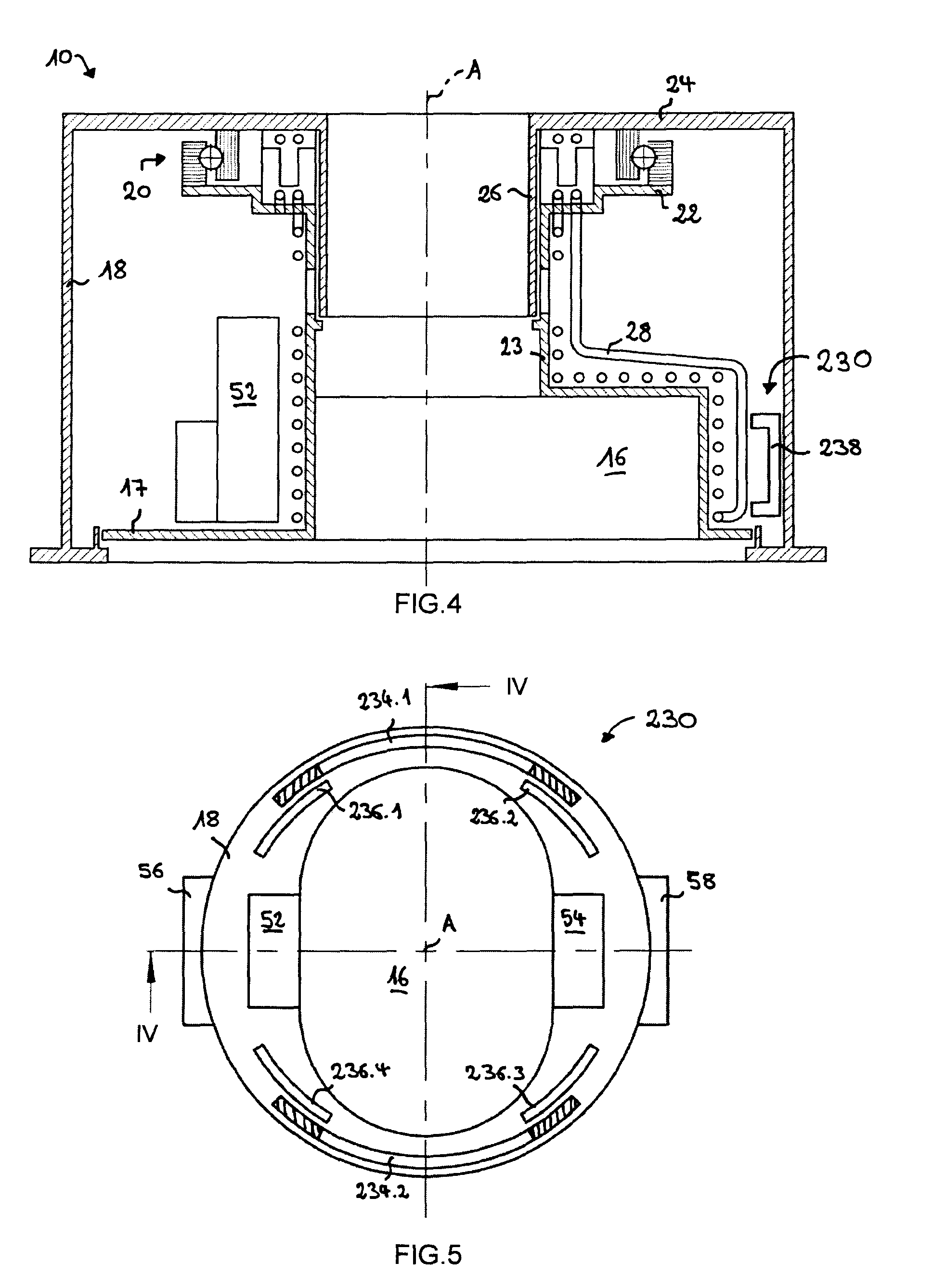Rotary charging device for a shaft furnace
a charging device and shaft furnace technology, applied in the direction of furnaces, charge manipulation, lighting and heating apparatuses, etc., can solve the problems of minor drawbacks, less power transmission efficiency, and even more wear of the shaft furnace, so as to achieve more than compensate the minor drawbacks
- Summary
- Abstract
- Description
- Claims
- Application Information
AI Technical Summary
Benefits of technology
Problems solved by technology
Method used
Image
Examples
Embodiment Construction
[0027]In FIG. 1, reference number 10 generally identifies a rotary charging device. The rotary charging device 10 will typically be installed on the throat of a shaft furnace (not shown) and in particular of a blast furnace for pig iron production. This charging device 10 comprises a rotary distribution means for distributing charge material on a charging surface in the hearth of the furnace. As part of the rotary distribution means, FIG. 1 shows a pivotable distribution chute 12 that is connected by means of duckbill-shaped mounting members 14 to a rotatable structure 16. The rotatable structure 16 has a lower support platform 17 (see FIG. 4) that supports an axle, forming axis B, on which the distribution chute 12 is suspended.
[0028]As seen in FIG. 1, the rotary charging device 10 also has a stationary support conceived as a housing 18. The rotatable structure 16 is rotatably supported in the housing 18 by means of large diameter roller bearings 20. The outer race of roller bearin...
PUM
| Property | Measurement | Unit |
|---|---|---|
| power consumption | aaaaa | aaaaa |
| radial width | aaaaa | aaaaa |
| electric power | aaaaa | aaaaa |
Abstract
Description
Claims
Application Information
 Login to View More
Login to View More - R&D
- Intellectual Property
- Life Sciences
- Materials
- Tech Scout
- Unparalleled Data Quality
- Higher Quality Content
- 60% Fewer Hallucinations
Browse by: Latest US Patents, China's latest patents, Technical Efficacy Thesaurus, Application Domain, Technology Topic, Popular Technical Reports.
© 2025 PatSnap. All rights reserved.Legal|Privacy policy|Modern Slavery Act Transparency Statement|Sitemap|About US| Contact US: help@patsnap.com



